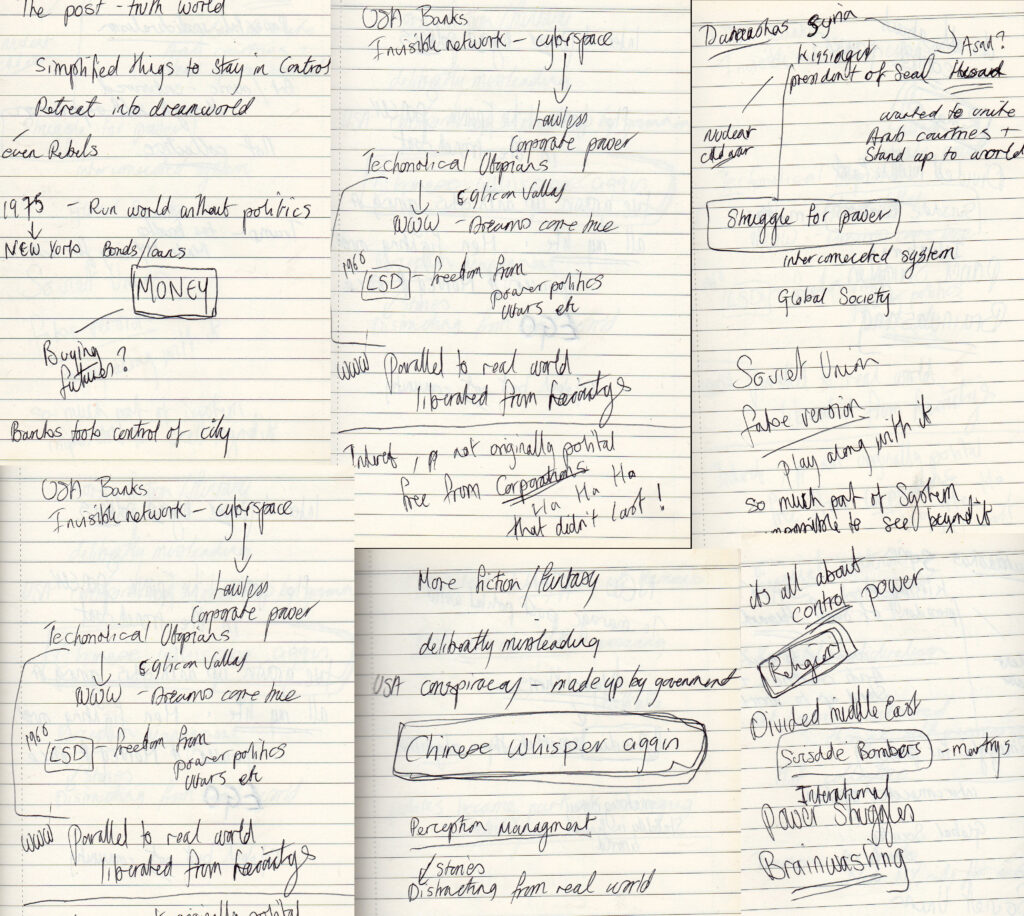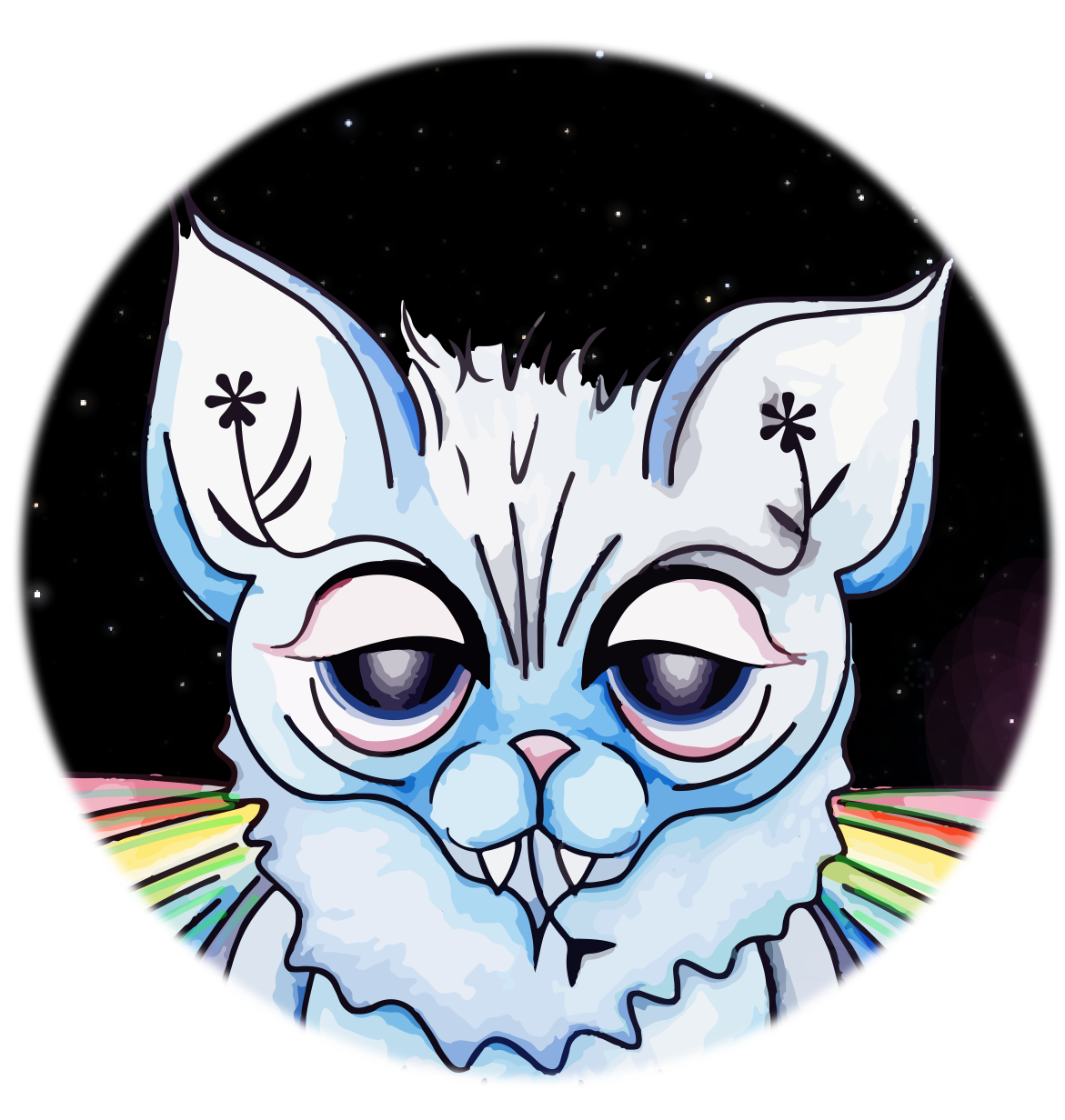After the lectures and resources I first thought about how messed up the world I’ve spent my entire line in is. Men and money and power and corruption, and being ‘fed’ information to keep the masses in line. A strange world. I already knew this but the ‘hypernormalisation’ film really bought this home. Hide in a bubble out of the real world which is not tolerant of others lives, and their lives being different. Essentially I think this goes right back to the Roman invasion of Europe, and probably even before that. Spending the week in the Scottish Highlands, and looking at the history, right from Hadrian’s Wall to the ‘Christianization’ of pagan societies. It seems people have always tried to inflict their ‘thinking, and theologies’ on other societies. It seems it is human nature to ‘control and manipulate’ others for personal gain, rather than to let be, and it makes me want to crawl under a rock and hide, which is I suppose what many do with the online fakery.
Do we really have our own thoughts? Or any autonomy over our lives?
So far I am having trouble accessing the semiotics paper, which is frustrating as I’m really interested in reading it. Even the link sent by Jill from the library has proved impossible to open, but hopefully I’ll get there with it soon. I have pressed on with the workshop challenge with my fingers crossed I will be able to access the book at some point!
For the workshop challenge I first thought about looking at the Womens football World cup as it is both currently in the news and a global brand. However I think my only approach on this would be to do exactly as was done in the lecture by looking at how different host countries make their own stamp on the brand. As the womens football world cup has only officially been going since 1991, and only played every four years, there is not much material to look at. It also follows on the back of the mens world cup, everyone knows what that is all about. I think an investigation and comparison between mens sport and womens sport promotion/logos/branding could be an interesting thing for me to look at in future.
There are several visuals linking the designs. At a glance the the Chinese design from 1991 has more of a cycling event feel to it.
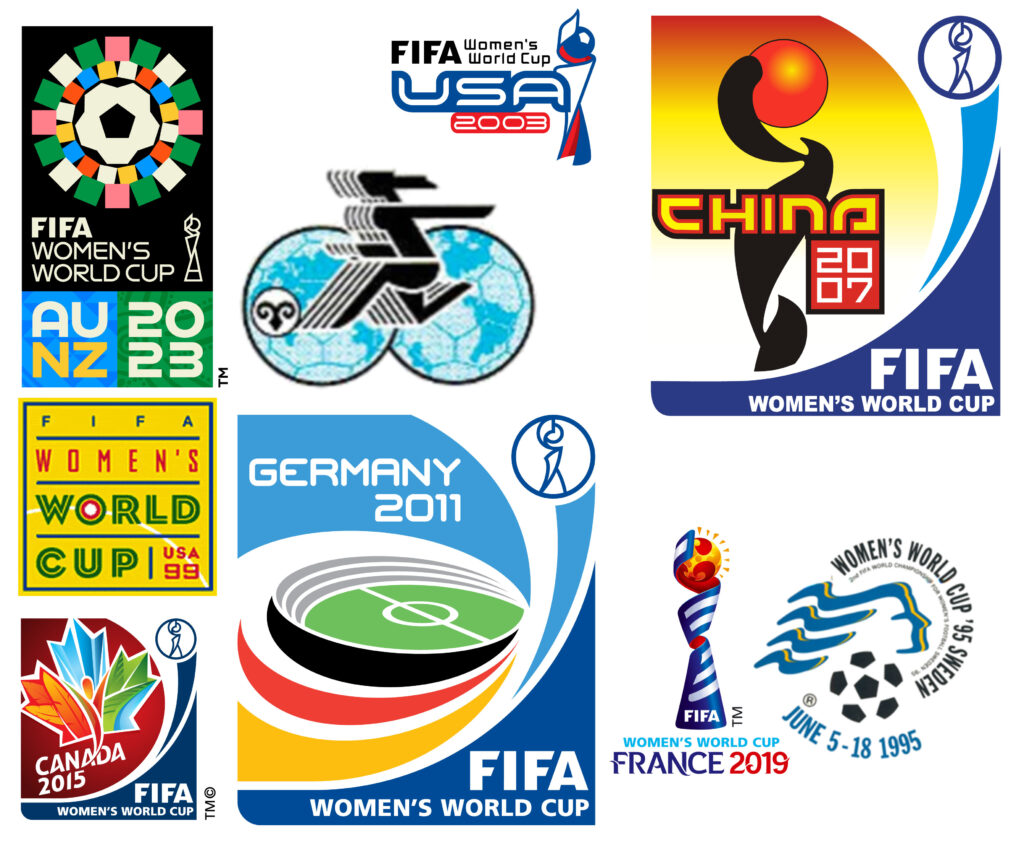
I then thought about cat food branding after seeing this delight on ‘its nice that.’ After the grimness of the film, and the underlaying message of the reading materials I decided to go fluffy.
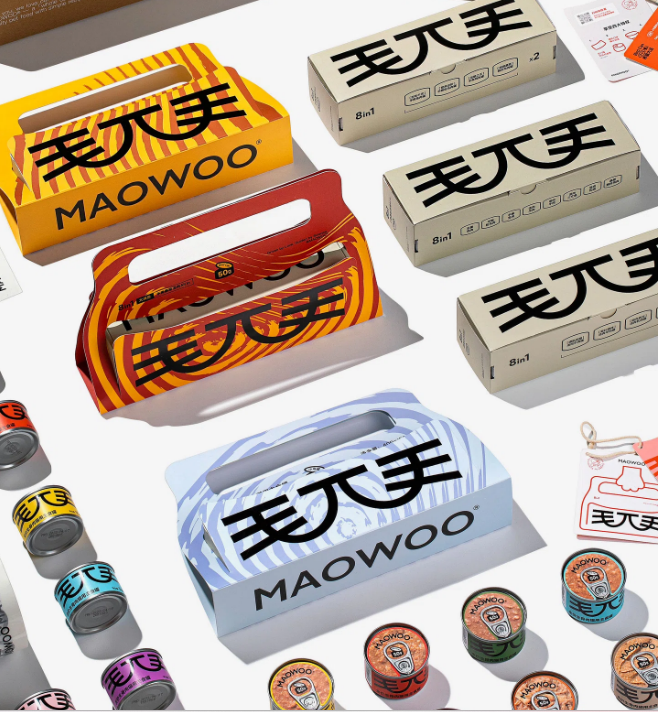
I thought of perhaps looking at different luxury cat food brands and how they present themselves. This would probably have entailed looking at different independent brands in each countries, which would be in a similar vein as looking at the women’s football logos. I decided to look at Purina, which makes several different brands within the UK. Looking at the Purina website It looks like the nestle of the pet food world with a huge global distribution, and upon further looking I discover it is actually owned by Nestle.
https://www.purina.com/international-sites
Purina has divided their site into four global areas, so I shall look at one design and brand from each area.
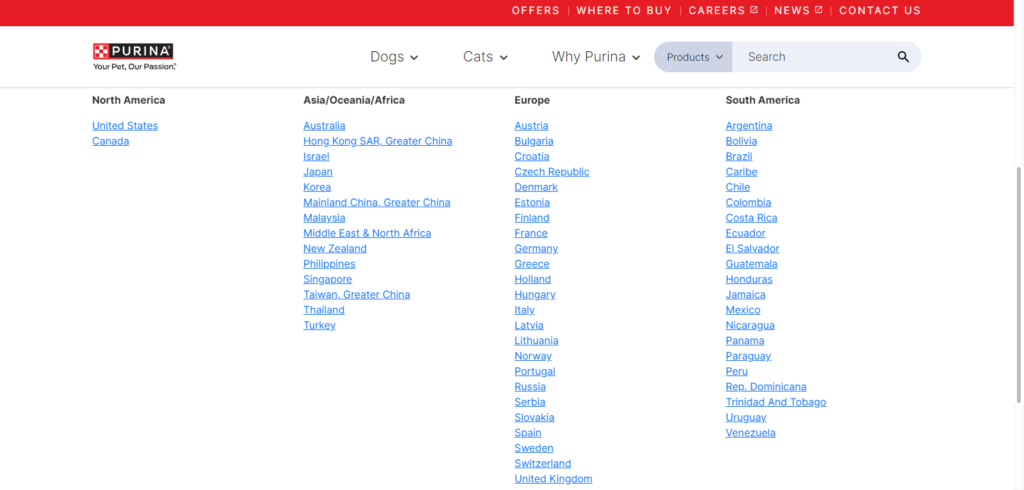
Of the 61 countries where Purina sells pet food, Felix is sold in 44 countries, mosrtly in Europe and South America.
In New Zealand it is called ‘Oscar’ and in Finland, Norway and Sweden it is called ‘Latz’.
I first clicked on the Japan site and had a great surprise, not speaking Japanese I have no idea which brand within Purina I am looking at, and didn’t want to spoil the aesthetics by using google translate.. So I may have to ditch the idea of looking at the brands within the brands and just go for imagery. I eventually did google translate, but it didn’t reveal much, just the main body of the text and I think there must have been bits that were left.
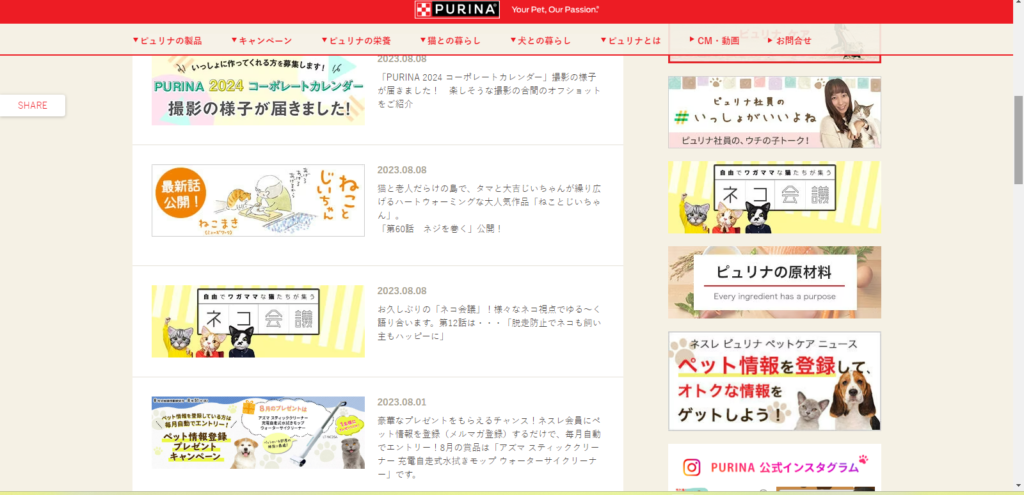
This pair feature quite regularly on Purina homepages globally
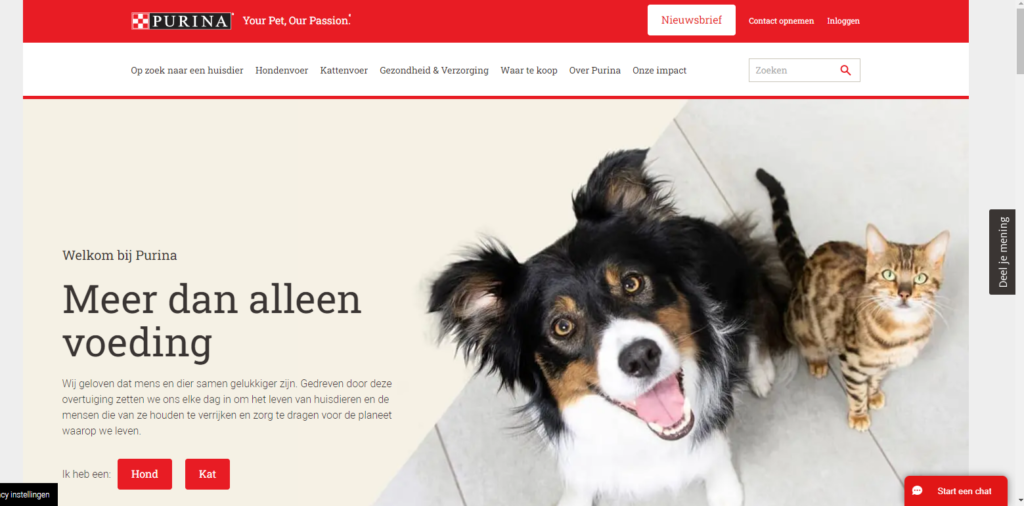
After my innitial WOW from the Japan site! Scrolling down the page I can see the Purina logo in English, so could possibly investigate an individual brand. On clicking on Proplan, I find the imagery really quite similar to what we see in the UK, with only slight differences, images of cats and dogs looking in good condition. I then decided to click on the ‘Felix’ brand, which is what my cat eats so I am very familiar with the UK packaging.
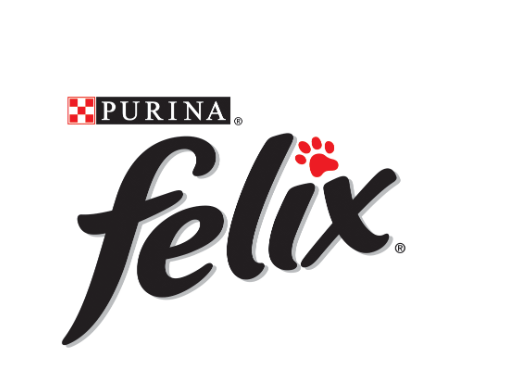
On the Japenese website page, The cat is pictured of in a. neutral gray drawn Kitchen. There’s obviously the Japanese writing calligraphy, which is different, and there’s also these funny little cartoons, a rabbit and a perhaps a chipmunk, a cartoon that look like they’re made out of cardboard cutouts with split pins to make the arms and legs move. And actually some of the font is made out of this sort of split pin lettering as well. They’re in a kitchen scene, but the kitchen is very neutral behind it, you can see a cooker and cupboards. But it’s these two little characters that I didn’t see in the other International areas that are interest me. What are they doing and are they about? Are they specific to Japanese Felix?
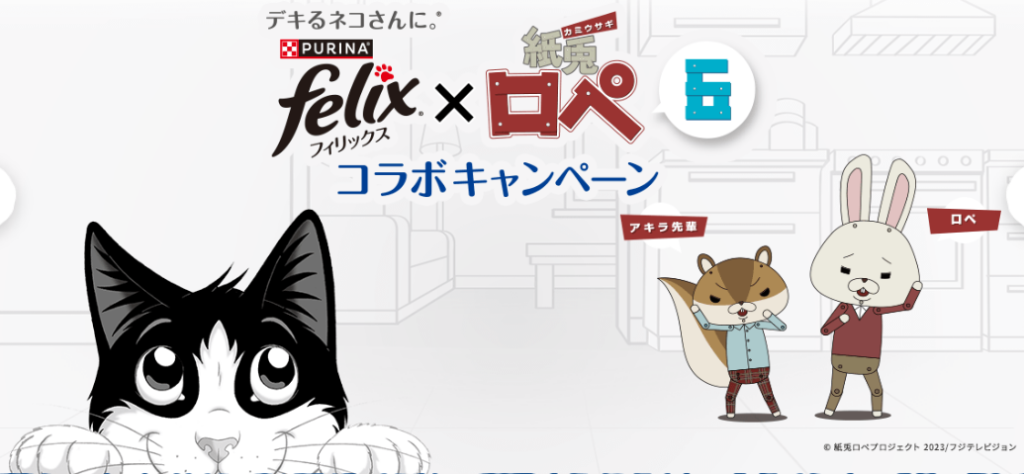
Interestingly the US and Canada do not have a ‘Felix’ brand within the Purina range. The nearest the North America has to the cartoon black and white Felix cat is ‘Kit and Kaboodle’ from USA a ginger cartoon cat. I have decide therefore to just look at three different locations rather than the four regions that Purina divide the world into.
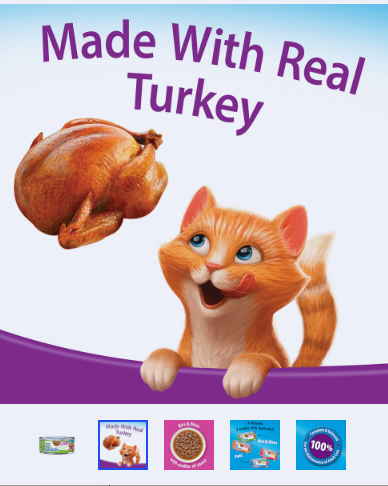
South Americas has a fair amount of the Felix brand, but their website and branding is more basic than the branding used in a lot of European countries and Japan.
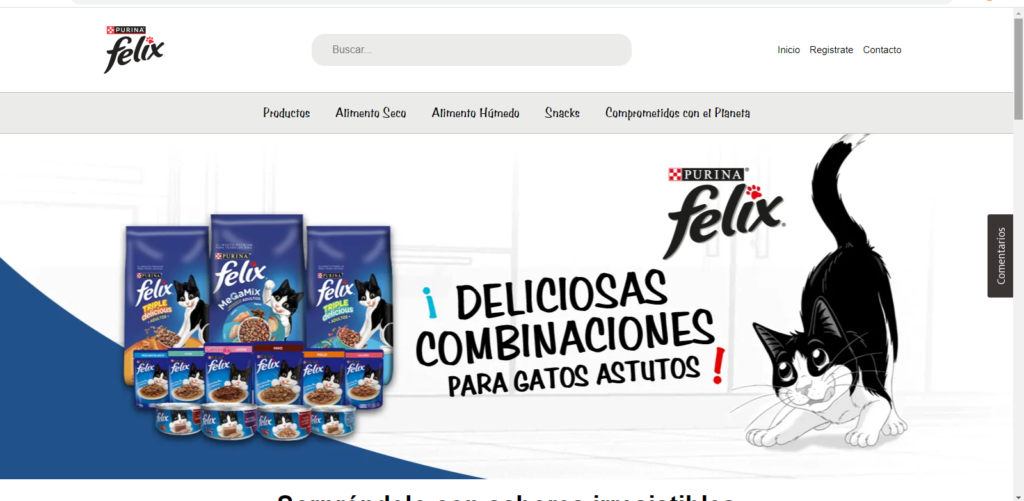
When looking at Europe I clicked on Holland first, perhaps with the upcoming trip in mind. Up popped a picture of Robbie Williams, so I thought I may as well look at the UK site, and low and behold there is Robbie Williams. So I’ll use the UK for my Europe site. Of the 21 countries in Europe that sell Felix, Robbie Williams sings on eight of the websites.
Felix isn’t looking Robbie in the eye, there’s something hovering behind his shoulder, or perhaps he has a mouse in his other hand?
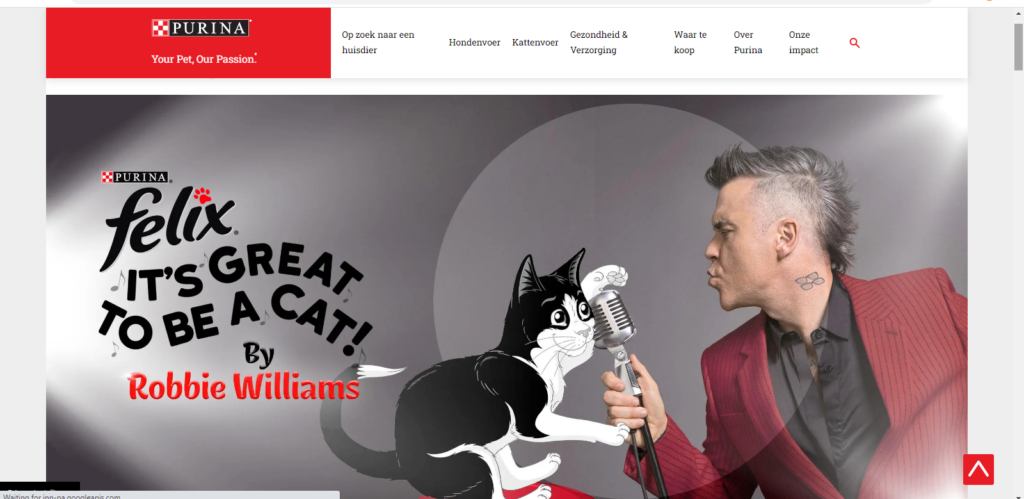
A collage of kitties, many countries use the same ‘template’ and just add their own language. The blue features fairly regularly too.
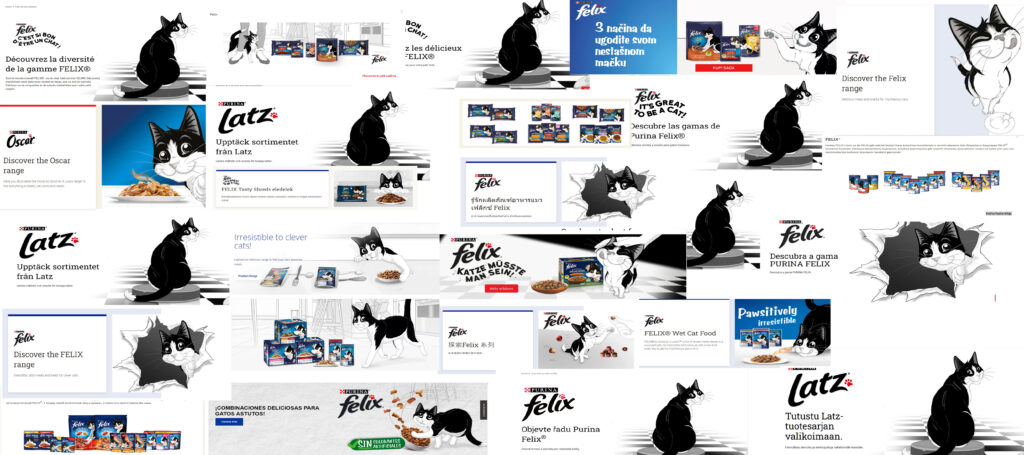
500 Words
I decided to look at Felix Cat food. Felix is owned by Purina, which is a subsidiary of Nestle, so it has a huge global reach. Purina makes many brands of cat food. I decided to look at Felix as I am familiar with the UK brand.
Purina has divided its offering into four global categories; North America, South America, Europe, and Asia/Oceania/Africa. I was initially going to take one example from each, but then discovered that in North America and Canada there is no such thing as Felix Cat Food. They do have a similar product called ‘Kit & Kaboodle’, but it was too different so I decided not to include it. I looked at Japan, England, and Costa Rica.
The branding for Felix in the UK is an animated cartoon, a black and white cheeky looking cat. It doesn’t use the typical photography of Purina’s other brands, which mostly consist of lovely pedigree animals, photographed to look appealing and healthy.
The same black and white cartoon cat appears across the whole Felix range globally, as does the Felix logo, and the Purina logo.
On the front page of the English and European website page, there is an animation of Felix the Cat in collaboration with Robbie Williams, singing together. If you Scroll down there are quite a lot of links and images of Robbie with Felix. You can download the song, see how the film was made and can upload pictures of your own cat with the music to this Felix website.
On the Japanese website page Felix is in a neutral grey illustrated kitchen. The writing is clearly different due to the differences in fonts used for Japanese, some of which are replaced by emoji’s and little cats. The overall feel of the page is fast, fun, and energetic.
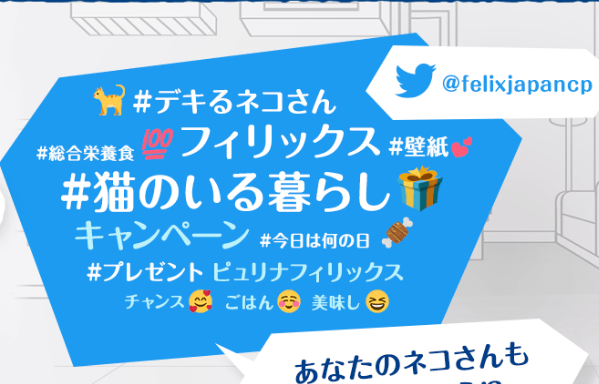
The Japanese version of Felix has a collaboration with ‘Paper Rabbit’, an anime film, which is popular culture within Japan. Scrolling down the page there are areas where you can post videos and photos of your own cats to match the Felix ‘theme’, and there are competitions to win prizes.
The first two of the three examples I looked at, Felix was placed in a distinct cultural reference; Pop music and anime. Both the English and Japanese sites incorporate local pop culture with the cat food branding, and have a fun vibe.
This interactivity and cultural referencing is not evident in the Costa Rican page.
I clicked across several in the South America category, but not all have Felix available and of those that do the brand identity does not have a cultural icon like the Western European and Japanese websites.
The Costa Rican Felix does have similarities to the Japanese page; the cat with the grey kitchen. But instead of a cultural reference there are packets of cat food which have the recipe names written in English, this suggests to me that Felix is not as well known in these countries, and they do not have the financial backing to pay or the visibility to collaborate with well-known pop culture.
A few scribble notes
